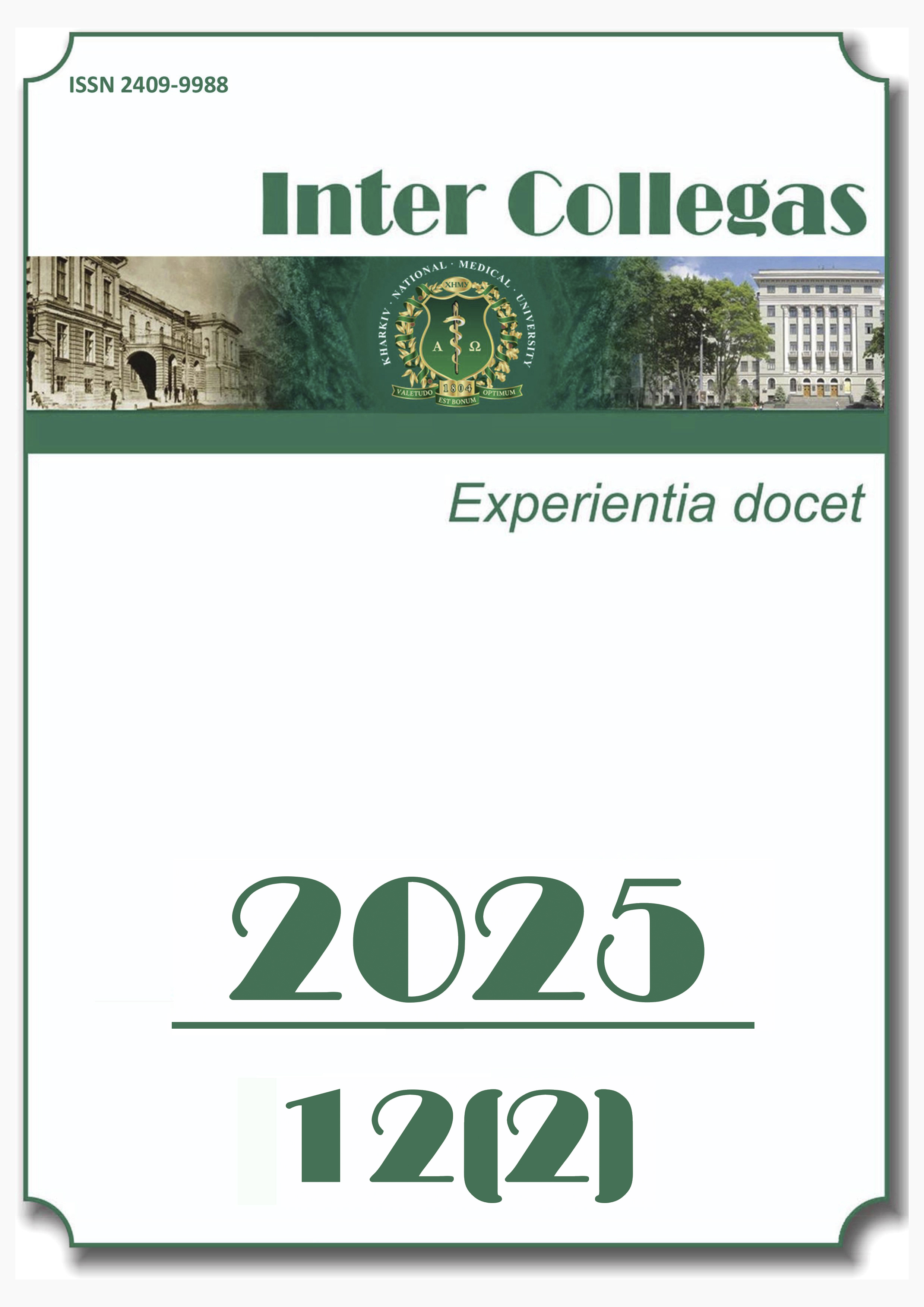Abstract
Background. Persistent Pulmonary Hypertension of the Newborn (PPHN) is a potentially life-threatening condition caused by abnormal postnatal transition from fetal to neonatal circulation. The COVID-19 pandemic and genetic syndromes, such as trisomy 21, have highlighted new challenges in its diagnosis and treatment.
Aim. To analyze clinical observations of the development of persistent fetal circulation of various origins in full-term newborns, to spread awareness among the medical community regarding the features of the diagnosis of this pathological condition after birth by analyzing the causes of cardiovascular system dysfunction, the difficulties of diagnosis in modern conditions.
Materials and Methods. The study was based on clinical and instrumental examinations of neonates diagnosed with PPHN in the early neonatal period. Doppler echocardiography, pulse oximetry, and standard clinical assessment were used. Two clinical cases of PPHN in a newborn from a mother with COVID-19 and in newborn with trisomy 21 were analyzed.
Results and Conclusions. In the first case, maternal COVID-19 infection resulted in impaired maternal-placental circulation, fetal hypoxia, and impaired pulmonary adaptation of the newborn with severe PPHN requiring intensive support. In the second case, PPHN in a neonate with trisomy 21 was prolonged and characterized by poor response to standard therapy. The results of the study emphasize that the pathogenesis of PPHN varies depending on the etiology – infectious or genetic and is accompanied by ventricular dysfunction. An interdisciplinary approach is important for timely assessment of signs of heart failure with early echocardiographic assessment and changes in treatment. Further studies are needed to develop early diagnostic and treatment algorithms.
Keywords: COVID-19, trisomy 21, fetal hypoxia, right-left shunt, echocardiography, Doppler.
Archived: https://doi.org/10.5281/zenodo.17494210
References
Jordan P, Cooper P, Budhwani A, Kunneth LS, Patel IA, Omohundro A, et al. Persistent pulmonary hypertension of the newborn. Prog Pediatr Cardiol. 2025;76:101777. DOI: 10.1016/j.ppedcard.2024.101777.
Nandula PS, Shah SD. Persistent Pulmonary Hypertension of the Newborn. Treasure Island (FL): StatPearls Publishing; 2023. Available at: https://www.ncbi.nlm.nih.gov/books/NBK585100 [accessed 30 Jun 2025].
Stark AR, Eichenwald EC. Persistent pulmonary hypertension of the newborn (PPHN): Clinical features and diagnosis. UpToDate, 21 Aug 2024 [Internet]. Available at: https://www.uptodate.com/contents/persistent-pulmonary-hypertension-of-the-newborn-pphn-clinical-features-and-diagnosis [accessed 30 Jun 2025].
Mandell E, Kinsella JP, Abman SH. Persistent pulmonary hypertension of the newborn. Pediatr Pulmonol. 2021;56(3):661-9. DOI: 10.1002/ppul.25073. PMID: 32930508.
Rosenzweig EB, Abman SH, Adatia I, Beghetti M, Bonnet D, Haworth S, et al. Paediatric pulmonary arterial hypertension: updates on definition, classification, diagnostics and management. Eur Respir J. 2019;53(1):1801916. DOI: 10.1183/13993003.01916-2018. PMID: 30545978.
Hansmann G, Koestenberger M, Alastalo TP, Apitz C, Austin ED, Bonnet D, et al. 2019 updated consensus statement on the diagnosis and treatment of pediatric pulmonary hypertension: The European Pediatric Pulmonary Vascular Disease Network (EPPVDN), endorsed by AEPC, ESPR and ISHLT. J Heart Lung Transplant. 2019;38(9):879-901. DOI: 10.1016/j.healun.2019.06.022 PMID: 31495407.
Freeman AR, Levine SA. The clinical significance of the systolic murmur: a study of 1,000 consecutive "non-cardiac" cases. Ann Intern Med. 1933;6(11):1371. DOI: 10.7326/0003-4819-6-11-1371.
Stolojanu C, Doros G, Bratu ML, Ciobanu I, Munteanu K, Iacob ER, et al. COVID-19 and Its Potential Impact on Children Born to Mothers Infected During Pregnancy: A Comprehensive Review. Diagnostics (Basel). 2024;14(21):2443. DOI: 10.3390/diagnostics14212443. PMID: 39518410.
Michelen M, Manoharan L, Elkheir N, Cheng V, Dagens A, Hastie C, et al. Characterising long COVID: a living systematic review. BMJ Glob Health. 2021;6(9):e005427. DOI: 10.1136/bmjgh-2021-005427. PMID: 34580069.
Wu Z, McGoogan JM. Characteristics of and important lessons from the coronavirus disease 2019 (COVID-19) outbreak in China: summary of a report of 72 314 cases from the Chinese Center for Disease Control and Prevention. JAMA. 2020;323(13):1239-42. DOI: 10.1001/jama.2020.2648. PMID: 32091533.
Corrado D, Link MS, Calkins H. Arrhythmogenic right ventricular cardiomyopathy. N Engl J Med. 2017;376(1):61-72. DOI: 10.1056/NEJMra1509267. PMID: 28052233.
Wu Q, Zhou L, Sun X, Yan Z, Hu C, Wu J, et al. Altered lipid metabolism in recovered SARS patients twelve years after infection. Sci Rep. 2017;7(1):9110. DOI:10.1038/s41598-017-09536-z. PMID: 28831119.
Agarwal AK, Garg R, Ritch A, Sarkar P. Postural orthostatic tachycardia syndrome. Postgrad Med J. 2007;83(981):478-80. DOI:10.1136/pgmj.2006.055046. PMID: 17621618.
Hopper RK, Abman SH, Elia EG, Avitabile CM, Yung D, Mullen MP, et al. Pulmonary hypertension in children with Down syndrome: results from the Pediatric Pulmonary Hypertension Network Registry. J Pediatr. 2023;252:131-40.e3. DOI: 10.1016/j.jpeds.2022.08.027. PMID: 36027975.
Nguyen CP, Kanaan U, Garcia RU, Ferguson ME, Wilson HC. Evaluation of clinical and echocardiographic factors associated with postoperative pulmonary arterial hypertension requiring medical therapy in infants with trisomy 21 undergoing atrioventricular septal defect repair. Prog Pediatr Cardiol. 2025;76(1):101801. DOI: 10.1016/j.ppedcard.2024.101801.
Bush DS, Ivy DD. Pulmonary hypertension in the population with Down syndrome. Cardiol Ther. 2022;11:33-47. DOI: 10.1007/s40119-021-00251-5. PMID: 35037192.
Bush D, Galambos C, Ivy DD, Abman SH, Wolter-Warmerdam K, Hickey F. Clinical Characteristics and Risk Factors for Developing Pulmonary Hypertension in Children with Down Syndrome. J Pediatr. 2018;202:212-219.e2. DOI: 10.1016/j.jpeds.2018.06.031. PMID: 30025669.

This work is licensed under a Creative Commons Attribution-NonCommercial-ShareAlike 4.0 International License.


